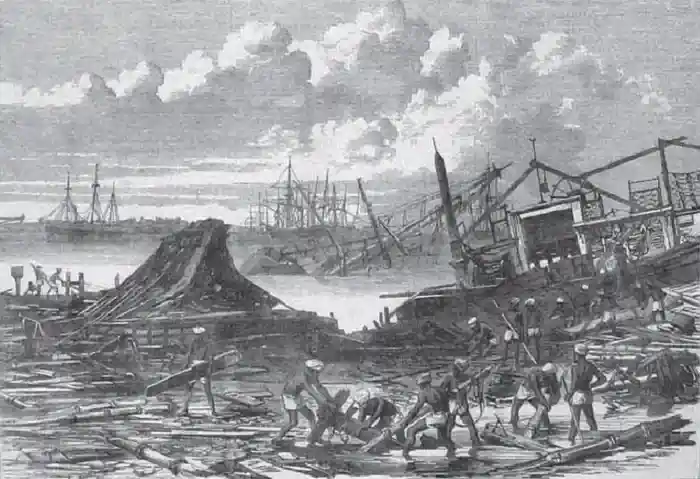What Hit Calcutta?
The earthquake/cyclone of 1737 that hit Calcutta is one of the most devastating natural calamities in the history of catastrophes. In no way was British India prepared for such a huge hit. With the destruction of valuable ports, human lives and fauna, Calcutta had to start again.

A sketch of catastrophe, Image Source- discover.hubpages.com
Just when the British imperialism disguised as trade had started spreading its wings on the Indian subcontinent, the British administration faced a huge setback. It was like any other day in Calcutta. People were up and ready to embark on another ordinary day, only if they knew what fate had decided for them.
The fateful morning of 11th October 1737 swept much of the town of Calcutta as a result of the tidal surge that was brewing in the belly of the river Ganga the previous night. A later discovery reveals that the cyclone came with an earthquake, which resulted in the ultimate doomsday.
Imagine living in a world with no technology and no source of concrete evidence that could corroborate the authenticity of an event. Calcutta of 1737 was a similar case. With no proper equipment or experts to study weather patterns and issue a red flag, the earthquake of 1737 swept a large part of the city, destroying everything in its way. With the mass media still in its infancy, instant news was a dream of the future.
As a result, the catastrophe of 1737 remains an enigma. Divided opinion on the subject has led to the formation of many theories which vary vastly.
An estimate given by Thomas Joshua Moore (a duties collector of the East India Company), 3,000 inhabitants suffered the wrath of the giant waves of the cyclone.
Another version of the event comes from the European sailors. They claim that around 20,000 ships were destroyed, and a whopping 300,000 people lost their lives due to a tidal surge and an earthquake.
By the time the news reached England, the confusion between a cyclone and an earthquake had ensued. Given the discrepancies in the statements of the eyewitnesses and the lack of technology to confirm exact facts, a general cloud of confusion loomed over the event. Thus began the battle of dual, differing claims.
It was not until contemporary times when researchers and scientists looked into the matter to know what happened. Roger Biham’s The 1737 Calcutta Earthquake and Cyclone evaluated suggests that the reports of the sailors were not fresh because they observed the aftermath of the event and reported it six months later.
Despite Moore's promising report, the Gentleman's Magazine in 1738 sided with the sailors and published a biased article. Furthermore, the ratio between the 18th-century population of Calcutta and the death toll does not add up. Calcutta housed 20,000 people at that time, then how it is possible that 300,000 people were killed?
Although modern geologists like Thomas Oldham think of the possibility of a simultaneous cyclone and earthquake, no prominent evidence has been earthed yet.
Whether the catastrophe of 1737 was a cyclone or earthquake remains a geological mystery. But one thing that remains unchanged is the fact that it was indeed a devastating calamity that destroyed much of Calcutta.


